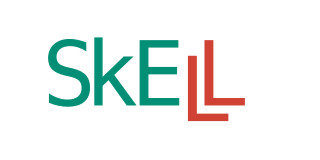 W
WPetrus Dasypodius was a Swiss humanist. Born in Frauenfeld, he was a teacher and pastor in Zürich from 1527. Due to the Swiss Reformation, he was forced to move back to Frauenfeld in 1530. In 1533, he went to Strasbourg, where he taught Latin at the Carmelite monastery, and later at the Gymnasium Argentinense.
 W
WThe Deutsches Wörterbuch, abbreviated DWB, is the largest and most comprehensive dictionary of the German language in existence. Encompassing modern High German vocabulary in use since 1450, it also includes loanwords adopted from other languages into German. Entries cover the etymology, meanings, attested forms, synonyms, usage peculiarities, and regional differences of words found throughout the German speaking world. The dictionary's historical linguistics approach, illuminated by examples from primary source documents, makes it to German what the Oxford English Dictionary is to English. The first completed DWB lists over 330,000 headwords in 67,000 print columns spanning 32 volumes.
 W
WDictionarium quatuor linguarum is a 16th-century book by the German polymath Hieronymus Megiser that includes a multilingual dictionary and a multilingual grammar of Italian, Slovene, German, and Latin. It also includes some Croatian words. It was compiled and published in 1592 in Graz (Austria), then part of the Habsburg Monarchy. The dictionary is the first multilingual dictionary of Slovene. The appendix, named Exempla aliquot declinationum et coniugationium contains some grammar of the included languages and has been recognised as the second grammar of Slovene and the first multilingual grammar that includes Slovene. The book marks the beginning of Slovene lexicography. An extended edition was published under the same title in 1744 at Klagenfurt (Austria) by the Jesuits. This second edition also contains example phrases in German and Slovene, illustrating the use of the entries given. The number of Slovene equivalents in this edition is notably higher; they often reflect Carinthian Slovene.
 W
WThe Duden is a dictionary of the German language, first published by Konrad Duden in 1880, and later by Bibliographisches Institut GmbH. The Duden is updated regularly with new editions appearing every four or five years. As of August 2017, it is in its 27th edition. It is printed as twelve volumes, with each volume covering different aspects of the German language such as loanwords, etymology, pronunciation, synonyms, etc.
 W
WJohannes Fries was a Swiss theologian and lexicographer during the Reformation. He is also known for his work in music theory.
 W
WThe 1791 German–Serbian dictionary, referred to as the Avramović Dictionary, is a historical bidirectional translation dictionary published in the Habsburg Empire's capital of Vienna in 1791, though 1790 is given as the year of publication in some of its copies. Containing around 20,000 headwords in each direction, it is the largest Serbian dictionary of the 18th century. Vuk Karadžić possibly used it as a source for his Serbian Dictionary, which first appeared in 1818 as the first book in modern literary Serbian.
 W
WDer Große Muret Sanders is a German–English and English–German bilingual dictionary now published by German publishing house Langenscheidt. In its original form, it was a (monodirectional) German–English dictionary in two volumes by Eduard Muret and Daniel Sanders, published in 1869. The most recent edition contains 560,000 entries in 4 volumes and is the largest German–English bilingual dictionary available; a CD-ROM edition is also available from Langenscheidt as Muret Sanders e-Großwörterbuch Deutsch–Englisch.
 W
WLEO is an Internet-based electronic dictionary and translation dictionary initiated by the computer science department of the Technical University of Munich in Germany. After a spin-out, the dictionaries have been run since 3 April 2006 by the limited liability company Leo GmbH, formed by the members of the original Leo team, and are partially funded by commercial advertising on the website. Its dictionaries can be consulted free online from any web browser or from LEO's Lion downloadable user interface (GUI) which is free since version 3.0 to private users only and no longer sold as shareware. Corporate users and research institutions are however required to purchase a licence.
 W
WJosua Maaler was a Swiss pastor and lexicographer. He was the author of the first dictionary which focussed exclusively on the German language, published in Zürich as Die Teütsch Spraach in 1561.
 W
WSchweizerisches Idiotikon is an ongoing, major project of lexicography of the Swiss German dialects. Publication began in 1881 and is projected to be complete by 2022. Its scope includes the language since the end of the classical Middle High German period and as such also represents the historical dictionary of the dialects of German-speaking Switzerland, and is one of the most detailed treatments of the Early Modern High German language in general.
 W
WSkELL is a free corpus-based web tool that allows language learners and teachers find authentic sentences for specific target word(s). For any word or a phrase, SkELL displays a concordance that lists example sentences drawn from a special text corpus crawled from the World Wide Web, which has been cleaned of spam and includes only high-quality texts covering everyday, standard, formal, and professional language. There are versions of SkELL for English, Russian, German, Italian, Czech and Estonian.
 W
WVocabularius ex quo is a 15th century Latin-German dictionary compiled by the Bechtermünz Brothers of Eltville am Rhein, with the assistance of an ageing and bankrupt Johann Gutenberg. The manuscript consists of two complementary parts, one from 1421 and the other from 1450. More than 270 surviving manuscripts and some fifty editions remain. It was the most commonly used late medieval alphabetical dictionary in Germany. It dates from the late 14th century and, spreading all over the then German speaking countries, and kept being copied until the last decades of the 15th century.